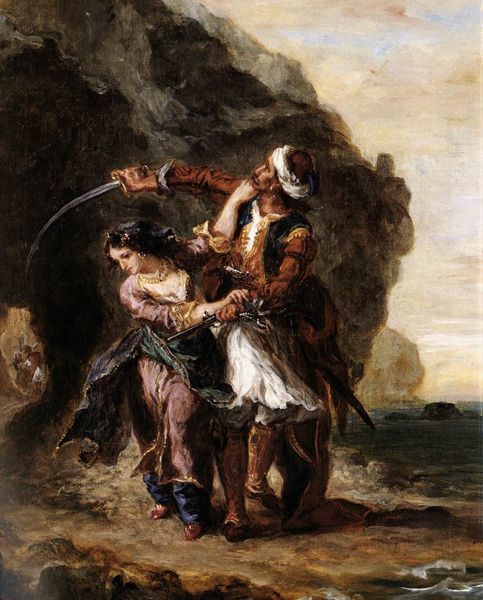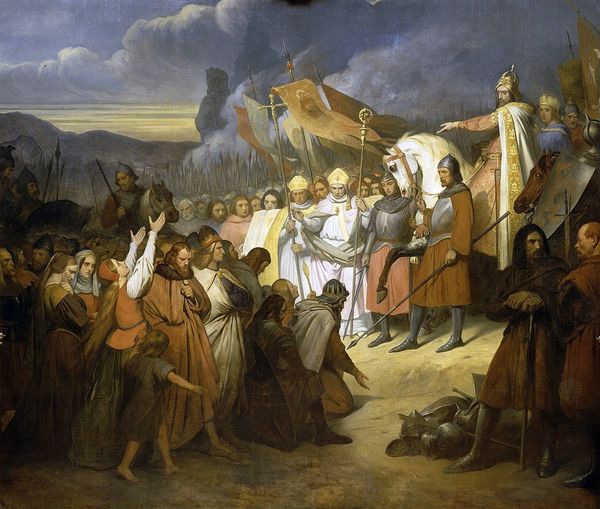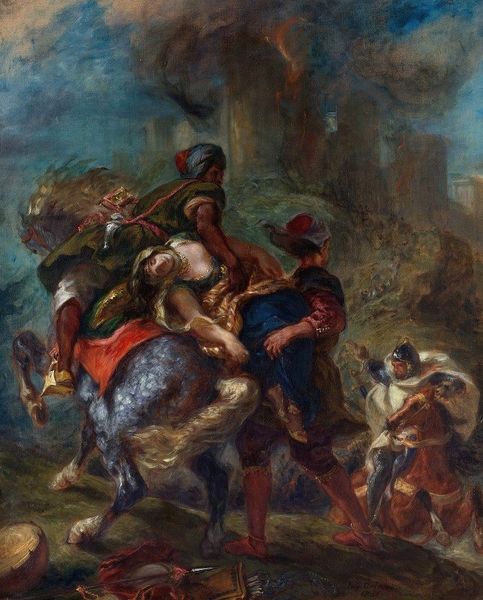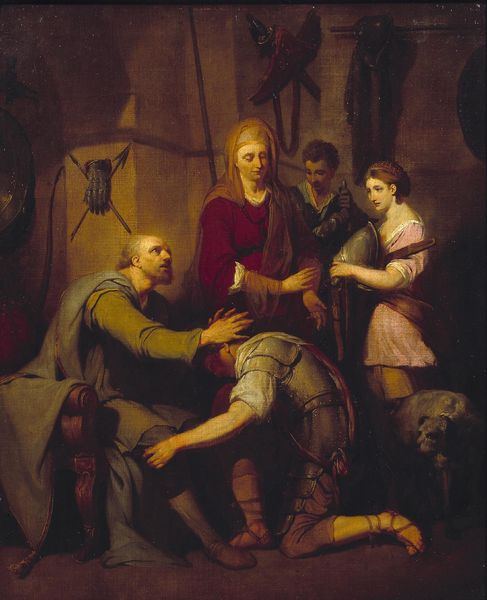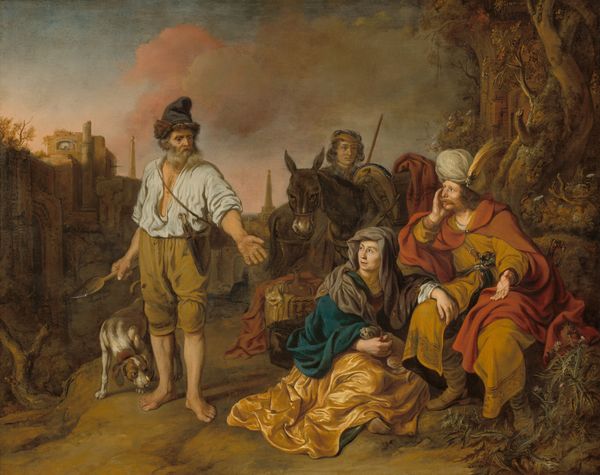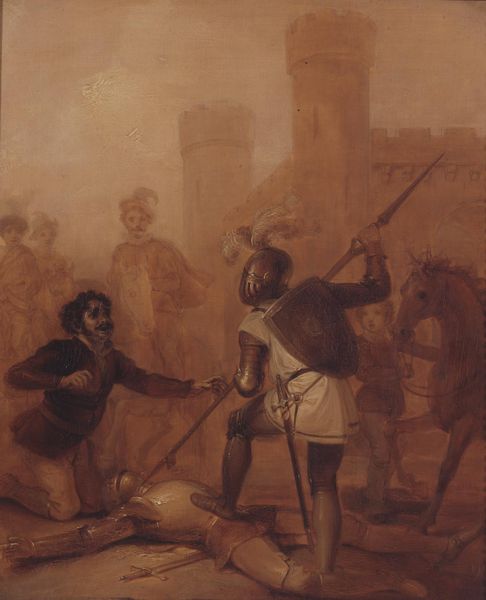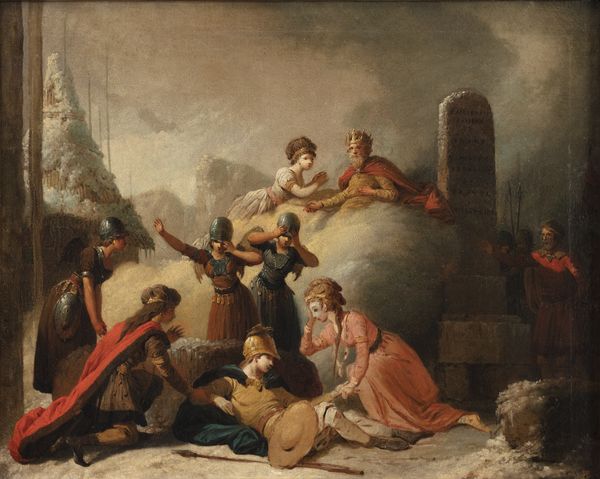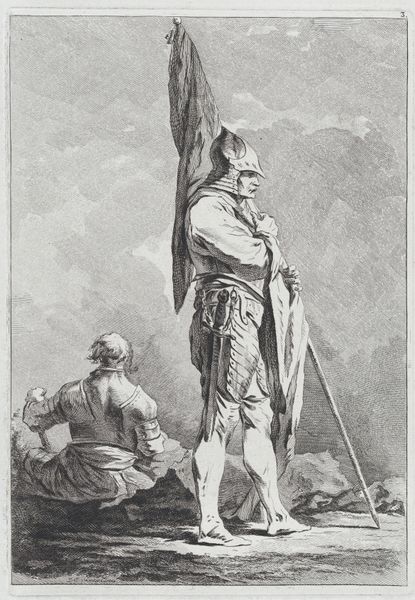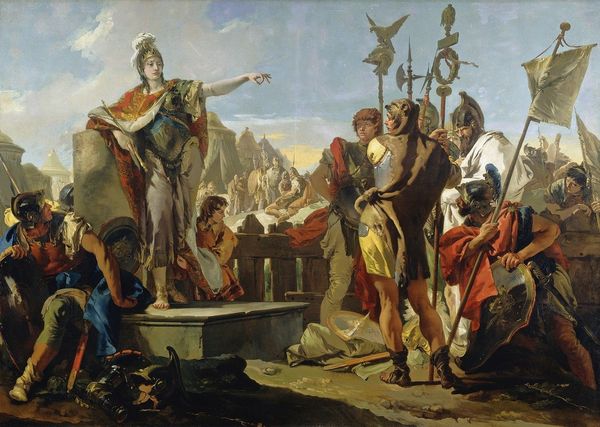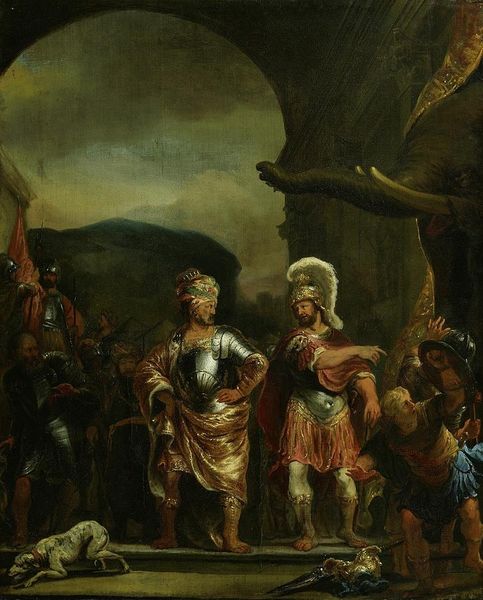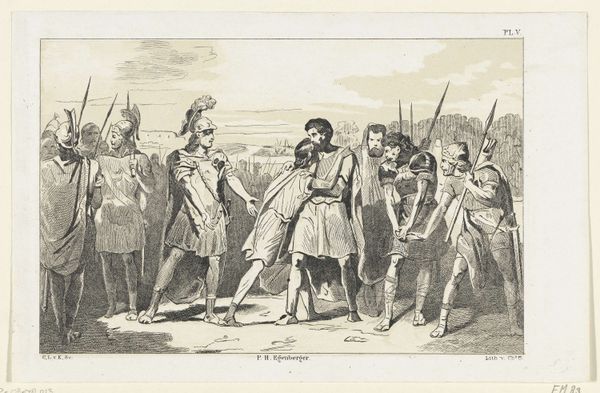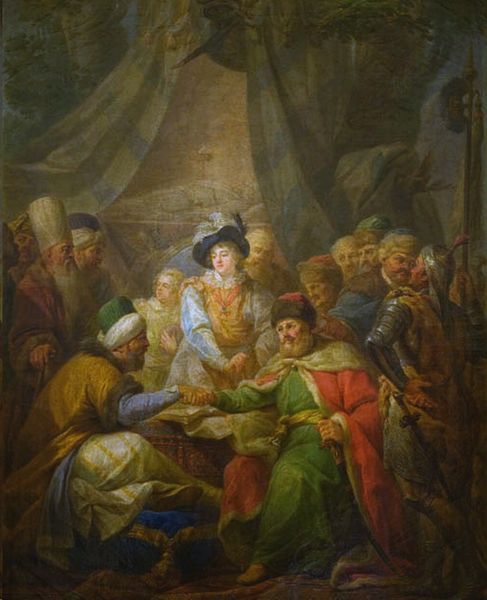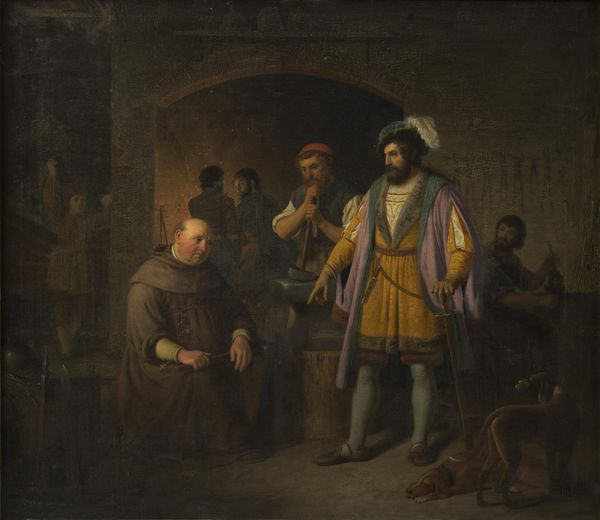
Dimensions: support: 762 x 635 mm
Copyright: CC-BY-NC-ND 4.0 DEED, Photo: Tate
Editor: Here we have "III. The Hero Rescues the Prisoners" by John Hamilton Mortimer. It's quite a dramatic scene. What strikes you most about the cultural context that might have influenced this work? Curator: Well, consider the late 18th century and the rise of Romanticism. Artists like Mortimer were fascinated by the heroic and sublime. What role does the setting play in amplifying this drama? Editor: It's dark and unclear, heightening the sense of desperation among the prisoners. The hero and his men are like a beacon of hope. Curator: Exactly! Mortimer is manipulating imagery for public consumption, reinforcing ideas about power, rescue, and perhaps even national identity during a time of significant social and political upheaval. What have you learned from this perspective? Editor: It's helped me understand how art can be a product of its time, reflecting and shaping social narratives. Thanks!
Comments
tate 6 months ago
⋮
http://www.tate.org.uk/art/artworks/mortimer-iii-the-hero-rescues-the-prisoners-n05839
Join the conversation
Join millions of artists and users on Artera today and experience the ultimate creative platform.
tate 6 months ago
⋮
One of four scenes from the life of a hero, in which Mortimer displays his distinguished technique as well as an enthusiasm for the wild banditti-infested landscapes of the seventeenth-century Italian artist, Salvator Rosa. These qualities make him a key figure in the development of Romanticism in England. The series of four pictures was shown at the Society of Artists (a precursor of the Royal Academy) in 1775. Gallery label, August 2004
